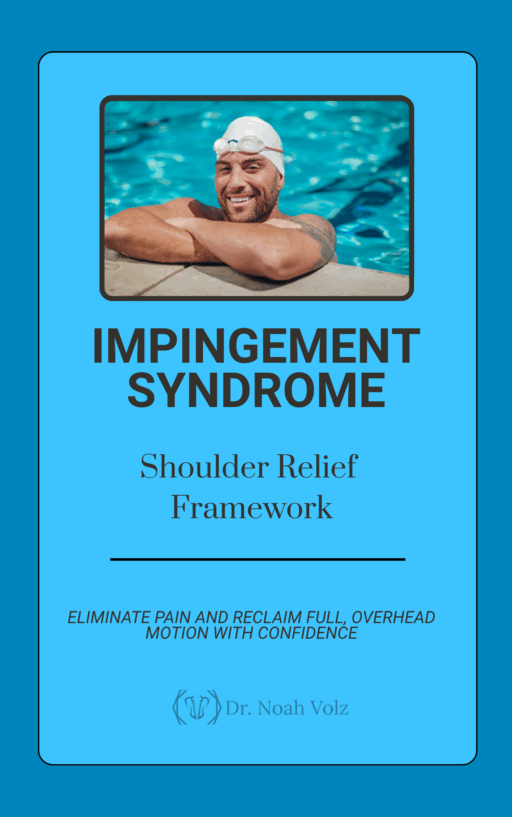Low back pain is a common ailment that affects millions of people worldwide. While the causes of low back pain can vary, one often overlooked culprit is piriformis syndrome. Piriformis syndrome occurs when the piriformis muscle, located in the buttocks, becomes hypertonic or irritated, compressing the sciatic nerve. This compression can lead to neurological symptoms, inflammation, and radicular complaints, ultimately resulting in low back pain. In this article, we will delve into the intricacies of piriformis syndrome, its relationship with low back pain, and various management strategies to alleviate the discomfort.
If you’re suffering from low back pain, seeking chiropractic care in Ashland, OR can be a helpful avenue to explore. I offer a range of chiropractic services tailored to individuals with piriformis syndrome and other related conditions.
Understanding Piriformis Syndrome
The piriformis muscle originates from the sacrum and inserts on the greater trochanter of the femur. Its primary function is to externally rotate the thigh when the hip is extended and assist in abduction when the hip is flexed. In most individuals, the sciatic nerve passes deep to the piriformis muscle. However, approximately one-fourth of the population has an anatomical variation where the sciatic nerve passes through or splits the muscle, making them more susceptible to piriformis syndrome.
The Onset and Symptoms
Piriformis syndrome can manifest suddenly or develop gradually over time. Traumatic events, such as a fall onto the buttocks or repetitive microtrauma from activities like long-distance walking or stair climbing, can irritate the piriformis muscle. Patients with piriformis syndrome often experience pain, paresthesia, or numbness starting in the gluteal region and radiating along the path of the sciatic nerve. Trigger point referral can also cause additional symptoms in the proximal thigh, sacroiliac, and hip regions. Prolonged sitting or standing exacerbates the discomfort, while positional changes may provide temporary relief. Some patients may even display an antalgic gait.
Clinical Evaluation and Diagnosis
When evaluating a patient for piriformis syndrome at our chiropractic clinic in Ashland, OR, palpation plays a crucial role. Clinicians will often identify hypertonicity and tenderness over the piriformis muscle. However, it’s important to consider somatic dysfunction in the sacroiliac joint and associated hip musculature, as they can contribute to the patient’s symptoms. Orthopedic testing, such as the FADIR test and Beatty test, can aid in the diagnosis of piriformis syndrome. Additionally, neurologic evaluation may reveal changes in sensation, reflexes, and motor strength. It is important to note that piriformis syndrome typically does not cause thigh weakness, unlike lumbar radiculopathy. At our chiropractic clinic in Ashland, OR, we strive to provide comprehensive care for patients with piriformis syndrome, addressing both the muscular and skeletal components of their condition.
Differential Diagnosis
Proper diagnosis is essential to differentiate piriformis syndrome from other conditions that may present with similar symptoms. Differential diagnoses for piriformis syndrome include hip pathology, fractures, lumbar compression fractures, discitis, trochanteric bursitis, sacroiliac joint dysfunction, lumbar radiculopathy, spinal stenosis, and viscerosomatic referred pain. A thorough evaluation should be performed to rule out these potential causes of low back pain.
Diagnostic Modalities
The diagnosis of piriformis syndrome primarily relies on accurate history taking and physical examination, which may include a consultation with a chiropractic expert in Ashland, OR. Radiographic imaging is of limited benefit in diagnosing soft tissue disorders, although it may be used to rule out other sources of radicular complaints. Advanced imaging techniques, such as MRI or CT scans, can provide detailed information about the anatomical structures involved. Additionally, diagnostic ultrasonography may reveal enlargement of the piriformis muscle belly or variations in sciatic nerve location. Electrodiagnostic testing can help differentiate piriformis syndrome from lumbar radiculopathy.
Treatment Approaches
The foundations of piriformis syndrome treatment revolve around chiropractic adjustments, stretching, myofascial release, and correction of underlying biomechanical dysfunction. Patients are often advised to temporarily limit activities that provoke symptoms, such as hill and stair climbing or prolonged sitting. Stretching exercises for the piriformis muscle can be performed in various positions, including seated, prone, or quadruped maneuvers.
Soft tissue manipulation, including myofascial release and stretching exercises, can address associated myofascial concerns in the gluteus, obturator, tensor fascia lata, hamstring, lumbar erectors, and hip adductors. Manual manipulation may also be necessary to correct joint dysfunction in the lumbar spine, sacroiliac joint, and lower extremities. Heat, ice, and ultrasound therapy have shown some benefits, particularly when applied before manual treatments. Nonsteroidal anti-inflammatory drugs (NSAIDs) may provide relief in the early stages of management.
Rehabilitation and Strengthening
Strengthening exercises play a crucial role in the rehabilitation of individuals with piriformis syndrome. Abductor, adductor, and gluteal muscle strengthening exercises can help improve pelvic stability and correct any biomechanical dysfunction. Clinicians should also consider the possibility of lower crossed syndrome and develop appropriate rehabilitation plans to address any associated issues. Structural leg length inequalities may require the use of a heel lift, while individuals with a loss of the longitudinal arch of the foot may benefit from arch supports or orthotics.
Medical Co-Management
In cases where conservative measures fail to provide adequate relief, medical co-management may be necessary. Muscle relaxants, steroids, trigger point injections, or even Botox injections can be considered for recalcitrant cases. However, these interventions should be carefully monitored and administered by qualified healthcare professionals.
Conclusion
Piriformis syndrome is an often overlooked cause of low back pain in Ashland, OR. Understanding its pathophysiology, recognizing the symptoms, and conducting a thorough evaluation are crucial for accurate diagnosis and effective management. By incorporating a multimodal approach that includes stretching, myofascial release, correction of biomechanical dysfunction, and targeted strengthening exercises, chiropractic clinicians in Ashland, OR can help patients find relief from the discomfort associated with piriformis syndrome. By shedding light on this condition, we can ensure that individuals experiencing low back pain in Ashland, OR receive the appropriate care and support they need from chiropractic professionals in the area to regain their quality of life.
References
- Yeoman W. The relation of arthritis of the sacroiliac joint to sciatica. Lancet. 1928;ii:1119-22.
- Williams PL, Warwick R. Gray’s Anatomy. 36th ed. Philadelphia, Pa: WB Saunders Co; 1980.
- Papadopoulos EC, Khan SN. Piriformis syndrome and low back pain: a new classification and review of the literature. Orthop Clin North Am. 2004;35:65-71.
- Pace JB, Nagle D. Piriformis syndrome. West J Med. 1976;124:435-439.
- Beason LE, Anson B.J. The relation of the sciatic nerve and its subdivisions to the piriformis muscle. Anat Record. 1937;70:1-5.
- Pecina M. Contribution to the etiological explanation of the piriformis syndrome. Acta Anat (Basel). 1979;105:181-187.
-

Bicep Tendon Pain Solution
$50.00 -

Brain Detoxification & Recovery System
$50.00 -

Brain Energy and Endurance Support System
$50.00 -

Brain-Based Movement and Motor Control Training
$50.00 -

Centralized Low Back Pain
$50.00 -

Cervical Radiculopathy: Neck and Nerve Relief Pathway
$50.00 -

Complex Low Back Pain
$50.00 -

Complex Radiating Low Back Pain
$50.00 -

Cross-Pattern Low Back Pain
$50.00 -

Frozen Shoulder Mobility Reset Plan
$50.00 -

Impingement Syndrome: Shoulder Relief Framework
$50.00 -

Mastering Brain Senses: Rebuild Your Hearing, Vision, and Body Awareness
$50.00













